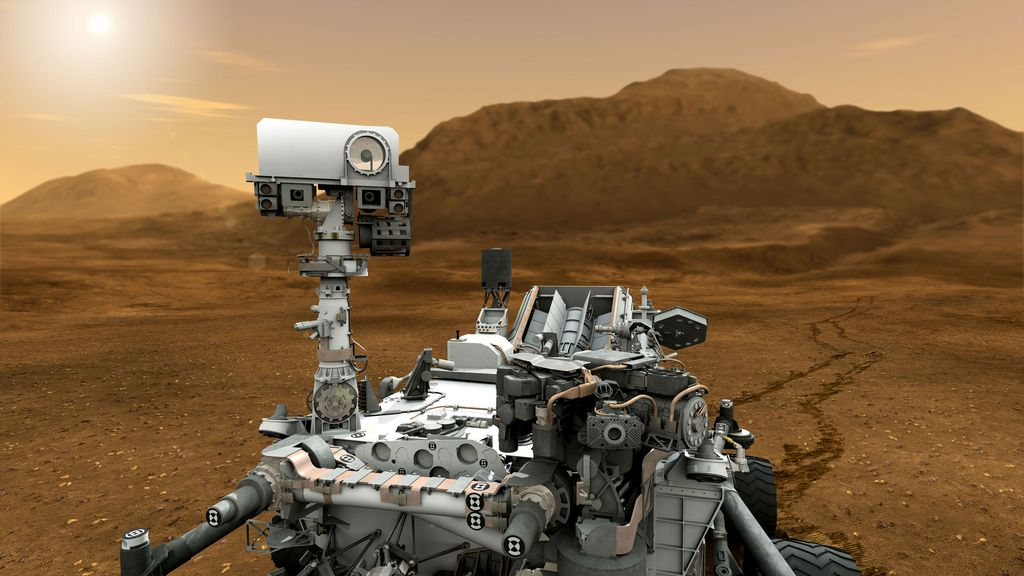Life on Mars Time: Scientists Adapt to Curiosity Rover's Red Planet Trek

Now that NASA's new Mars rover Curiosity is on the ground, the work begins — not just for the robot, but for many humans back on Earth.
It will take teams of dozens of scientists working around the clock to monitor and guide Curiosity as it explores its new home, Mars' Gale Crater.
"There are a lot of long hours, but the adrenaline will last for a while," Curiosity mission systems manager Michael Watkins said during a news briefing today (Aug. 7) at NASA's Jet Propulsion Laboratory (JPL) in Pasadena, Calif. "These are the days that people worked five and 10 years for, going on right now."
Curiosity, the centerpiece of the $2.5 billion Mars Science Laboratory mission, landed on Mars Aug. 5 after launching last fall. The car-size rover is slated to last at least two years on Mars studying whether the Red Planet ever had the water and other conditions thought necessary to host life. [Gallery: Curiosity's Landing Day at JPL]
Living on Mars time
While Curiosity is fairly autonomous, equipped with cameras at front and back to detect obstacles such as boulders in its path and avoid them, the rover will also receive intensive instructions from people back on Earth.
For the first 90 Mars days, or Sols, the teams in charge of each of Curiosity's 10 science instruments will put the rover through its paces to check them out. These teams will live vicariously through Curiosity, seeing what it sees on large television screens and even operating on Mars time, where the day lasts 24 hours and 39 minutes.
Get the Space.com Newsletter
Breaking space news, the latest updates on rocket launches, skywatching events and more!
"The shifts are based on Mars time," said Chuck Baker, mission planner for the cruise portion of Curiosity's trip from Earth to Mars. "You see a lot of people who wind up working weird hours. A lot of people have cots in their offices because getting sleep can get a little hairy."
Baker estimated that around 20 to 50 people will be working on console at any given time in Mission Control, which is based at JPL.
Hello Mars, are you there?
And because of the distance between Earth and Mars, radio signals sent from Mission Control take time to reach the Red Planet. For now, messages to Curiosity are relayed via NASA's two orbiters circling the Red Planet: Mars Odyssey and Mars Reconnaissance Orbiter, but direct Earth-to-rover communications are due to be established soon.
"We can't control it in real time because of the gulf of distance between Earth and Mars," Baker told SPACE.com. The lag can be as much as 20 minutes one way, and as little as 10 minutes one way; it just depends on where Mars is. That's pretty important when you send commands; that needs to be taken into account."
Some team members will monitor the rover's navigation software, while others will make sure its telecommunications systems are functioning. Additional teams will be devoted to each of its science instruments, such as its Radiation Assessment Detector (RAD), which will measure the ambient radiation on Mars, its Mast Camera (Mastcam), a camera mounted on its tall mast to take panoramic photos of the scene, and its ChemCam, which will zap rocks with a laser to analyze their chemical makeup. Furthermore, some mission managers must plan ahead and instruct Curiosity on where to explore next.
"There's a group of people that actually plan with an animation with real imagery and determine where it is we're going to go," Baker said. "That gets turned into sequences and then gets sent up to the spacecraft."
Still other teams will analyze the science data as it comes down, spending months and years studying the wealth of information Curiosity will reveal.
Overall, hundreds of people will contribute to the mission of this one robotic explorer.
"This is the closest you can get to being a Martian astronaut," Baker said. "We call ourselves Martians because of that very fact. You feel as though you're literally part of what's going on. The mission becomes a part of you, it truly does."
Follow Clara Moskowitz on Twitter @ClaraMoskowitz or SPACE.com @Spacedotcom. We're also on Facebook & Google+.
Join our Space Forums to keep talking space on the latest missions, night sky and more! And if you have a news tip, correction or comment, let us know at: community@space.com.

Clara Moskowitz is a science and space writer who joined the Space.com team in 2008 and served as Assistant Managing Editor from 2011 to 2013. Clara has a bachelor's degree in astronomy and physics from Wesleyan University, and a graduate certificate in science writing from the University of California, Santa Cruz. She covers everything from astronomy to human spaceflight and once aced a NASTAR suborbital spaceflight training program for space missions. Clara is currently Associate Editor of Scientific American. To see her latest project is, follow Clara on Twitter.